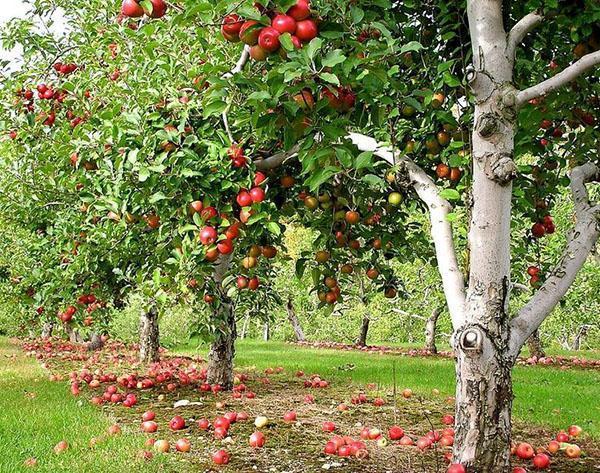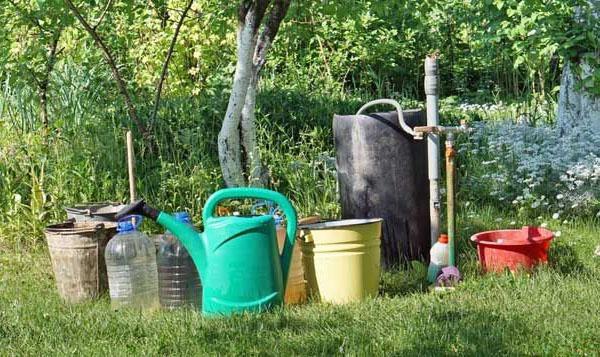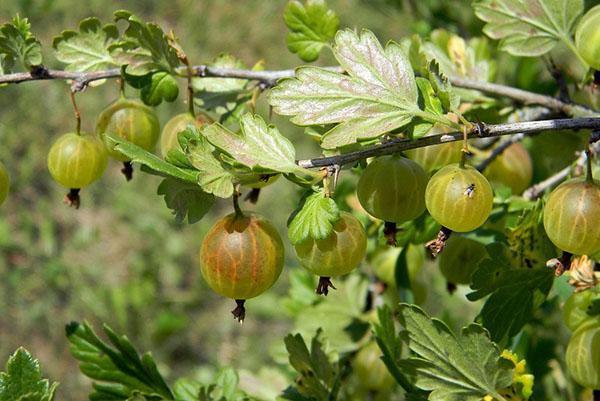It's time to take care of the future harvest - August in the garden
 August promises the summer resident both joys and worries. In the garden, on the branches of fruit trees and shrubs, the last summer berries and fruits are poured, the growth of young shoots is coming to an end, and active preparation for the dormant period is underway. The well-being of the garden and the future harvest largely depend on how this time passes.
August promises the summer resident both joys and worries. In the garden, on the branches of fruit trees and shrubs, the last summer berries and fruits are poured, the growth of young shoots is coming to an end, and active preparation for the dormant period is underway. The well-being of the garden and the future harvest largely depend on how this time passes.
Pest control and garden pruning in August

For several summer weeks, more than one generation of pests is replaced. While it's warm, young shoots currants, raspberries, pears and apple trees are attacked by aphids and other insects that suck and damage foliage. Therefore, it is so important to change the trapping belts, as well as remove carrion, weeds under the crowns and undergrowth. In addition, treatment of the crown with insecticides is necessary.
If the garden plantings have not finished bearing fruit, the use of chemicals is unsafe. For spraying the crown, it is better to take an infusion of marigolds, garlic arrows, celandine.
Sanitary pruning in August does not end with root growth under all fruit crops. After fruiting, it's time to remove two-year-old shoots of regular raspberries. It is important that the cut is at ground level and that all fallen stems and parts of stems are removed. Repaired varieties are fed potash fertilizers... This will help the plants form a second crop.
On fruit trees in August, gum may appear. To prevent damage to wood from becoming a refuge for pests, lichen spores, fungi and bacteria, the bark is cleaned and thoroughly treated with garden varnish.
Watering and feeding the country garden in August
 Although most of the harvest has already been taken, the garden plants in the country need watering. But it must be carried out, taking into account the characteristics of different cultures.
Although most of the harvest has already been taken, the garden plants in the country need watering. But it must be carried out, taking into account the characteristics of different cultures.
For example, all trees, especially young ones, bushes of currants, gooseberries, irgi, chokeberry must be watered. Without water, gooseberries, cherries, Red currant and a number of other plants are losing their foliage. If the moisture deficit is not replenished, they will be less prepared for winter and will endure frost.
Beds with garden strawberries of remontant varieties and vines on which grapes ripen are watered less frequently in August than in the first half of summer. Return to the normal schedule when the berries are harvested.
A summer resident in August should help prepare the garden for autumn and winter. For this, the regime and composition of dressings are changed, reducing the nitrogen content in them. This chemical element causes the growth of foliage and shoots. If you do not limit the consumption of nitrogen fertilizers, the young growth will inevitably freeze, weaken the plants, and next summer it will hardly be possible to expect a bountiful harvest.
 In August fruit trees and shrubs in the garden, they are fed with potassium-phosphorus mixtures or sifted wood ash. After such feeding, gooseberries and black currants form fruit buds of the future harvest, the growth gets stronger and lignifies faster. However, green stems longer than 30–40 cm are unlikely to have time to ripen before the cold weather. For such annual shoots on berry bushes, pinching is recommended.
In August fruit trees and shrubs in the garden, they are fed with potassium-phosphorus mixtures or sifted wood ash. After such feeding, gooseberries and black currants form fruit buds of the future harvest, the growth gets stronger and lignifies faster. However, green stems longer than 30–40 cm are unlikely to have time to ripen before the cold weather. For such annual shoots on berry bushes, pinching is recommended.
August planting and preparation for them in the country

In July, after harvesting garden strawberries, the plants actively form a mustache with daughter rosettes.This is an excellent planting material, so that a month later, you can update or expand the summer cottage plantings of everyone's favorite berries.
The grown daughter sockets are separated and transferred to a previously prepared bed. In order for the strawberries to grow stronger next year and give a decent harvest, well-rotted manure or humus is introduced into the soil, peat or sand is added to the dense soil. It is important not to deepen the sockets during planting. If the growth point is under a layer of substrate, this will slow down the development of the bush, or it will not survive winter at all.
If mature plants remain for the next year, the beds are tidied up, removing dead leaves, weeding and removing rosettes, because of which the plantings over the summer were too thickened.
In August, it's time to think about the future of the garden and prepare planting holes for young fruit trees and shrubs.
 The place for them is chosen so that the existing garden crops do not block the light for the seedlings, and the grown young apple and cherry trees do not take food away from their adult “colleagues”.
The place for them is chosen so that the existing garden crops do not block the light for the seedlings, and the grown young apple and cherry trees do not take food away from their adult “colleagues”.
For apple and pear trees, depending on the variety, the distance between the trees is laid at least 3-5 meters. Shrubs are planted at a distance of 1.5-2 meters from each other. The planting pits filled with humus or manure are covered with a foil, and after 2–4 weeks, when the time comes to plant fruit crops, the organic matter will finally grind and serve for the active rooting of seedlings.
why did the gooseberry drop the foliage of the moon
If this happened now, there is no cause for concern - like all deciduous shrubs, gooseberries are simply preparing for a dormant period. However, if the leaves fall off in the spring and summer, you should carefully examine the bush. The cause of premature leaf fall may be powdery mildew or the presence of such a weed as wheatgrass under the bush (its roots secrete toxins harmful to gooseberries). Also, foliage can crumble ahead of time from lack of moisture or lack of potassium.